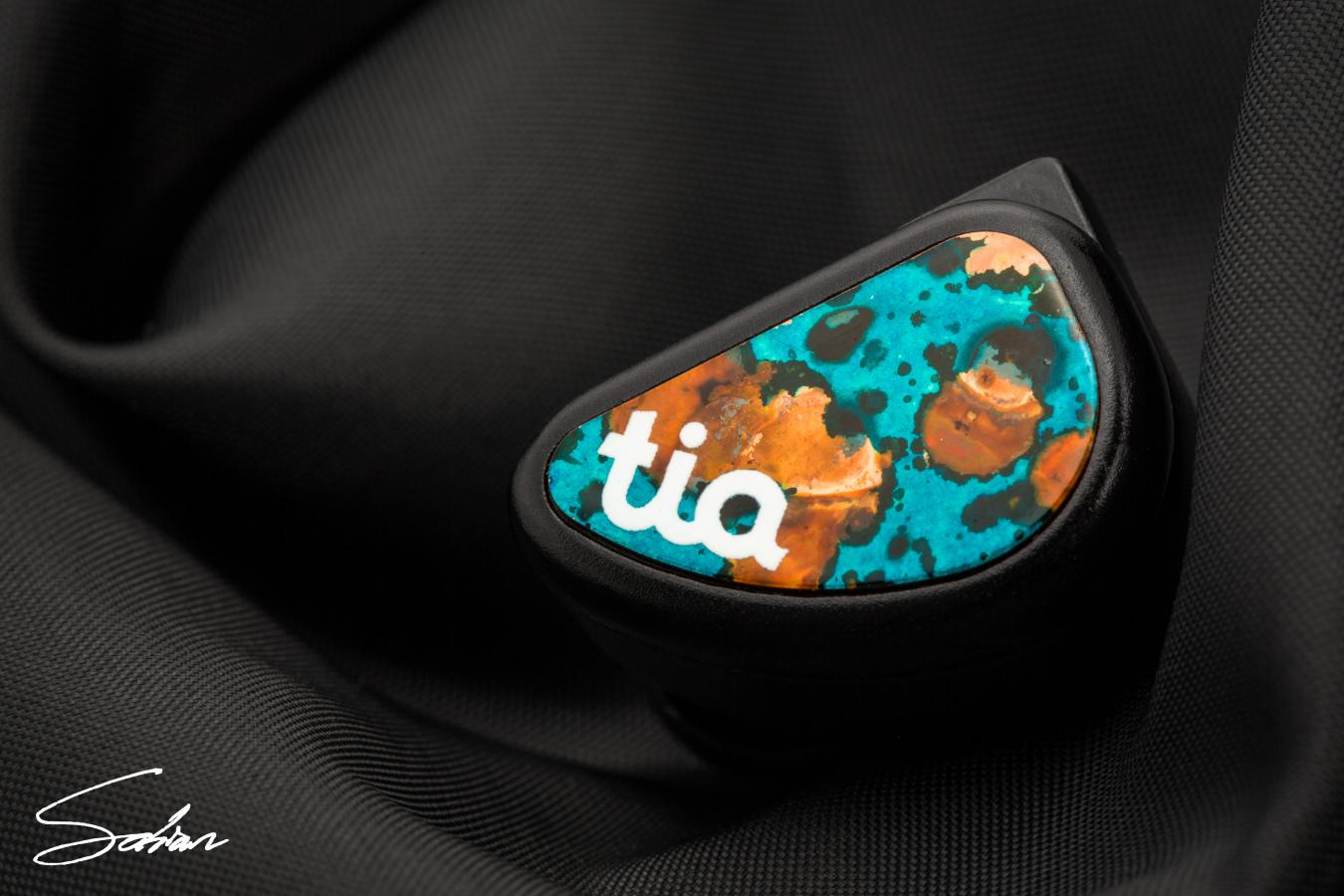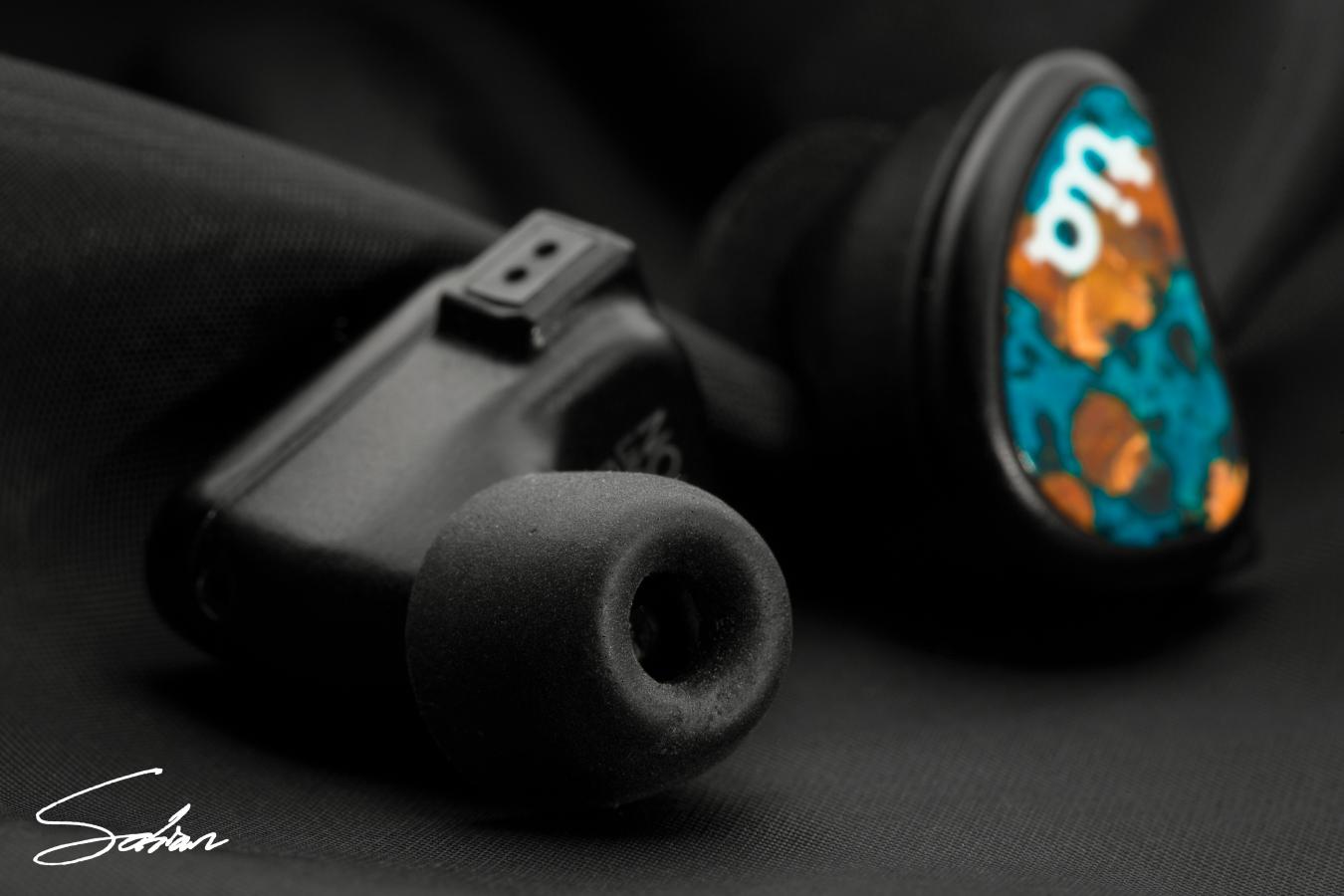Presentation
As the original was, the Fourté Noir ranks among the world’s best in detail retrieval, separation and spatial performance. While in-ear monitors generally require a certain amount of colouration to get rid of their muddy, unwanted overtones and maximise clarity, the Noir’s most exceptional trait is how pristine it’s able to sound without killing those resonances outright. Take the heavy, full-bodied drums that start the verse of Nathan East’s Love’s Holiday. I find that section unique because of how differently it translates between IEMs and speakers. In-ears are rarely ever to fully resolve those drums, because of how big and bloomy they’re mixed. Warmer IEMs deliver the weight, but not the clarity, and vice-versa. The Noir is unique in that, like speakers, it’s able to deliver both the impact of the drums and resolve the textures within too.

This is achieved via the Noir’s outstandingly defined backdrop. Most probably through apex, there isn’t that vacuum-like feeling when you’re listening to the IEMs. Air seemingly travels freely through the Noir, which makes its delivery of music effortless and transparent. In tone, the Noir arrives at a neutral, though not the most linear one I’ve ever heard, because of the contrast between the extremes. It’s a tad better at engaging the listener via flashes of energy (Animals as Leaders’ Tooth and Claw) than immersing them in lush soundscapes (Jacob Collier’s Moon River). Thankfully though, the Noir never fails to engage with its vast, corporeal imaging; spacious not only in width and depth, but in height as well. And, despite the headroom, instruments are never distant either. They’re always focused and substantial; near-physical to the touch.
Bass
With the Noir refresh came a retune of the dynamic driver, giving lows a greater presence in the mix. As a result, there’s now a whiff of warmth behind the Fourté’s tight, clinically-separated notes for a more musical, ensemble-y soundscape. While it may not be an ideal change for those who enjoyed the original Fourté’s merciless, machine-like separation, it’ll be a godsend to those who found the original a tad too cold. The Noir’s emphasis down low is on the sub-bass, dipping very linearly as it approaches the mid- and upper-lows. So, it’s a bass response which highlights rumble, physicality and texture first, impact second, then richness third; a visceral low-end that restrains how much fat it imparts onto the mids.
This means the lows are layered and separated precisely too. The toms and kick on Larnell Lewis’s Change Your Mind are nuanced and resolved without losing mid-bass impact. But, this is more hit-and-miss on – say – the contra bass, which is more reliant on the upper-bass for its bloomy, woody notes. The one on Sarah McKenzie’s That’s It, I Quit doesn’t have as much oomph as it could, while the one that opens Lake Street Dive’s Faith has wonderful weight. Technically, the Fourté continues to deliver. Tori Kelly’s Nobody Love and Carly Rae Jepsen’s All That showcase its extension, resonating with both ease and a woofer-like depth. With the retune, the Noir’s lows boast body and verve with zero compromise to authority.
Midrange
The Fourté Noir’s midrange is crisp, fast and exceedingly detailed. Like the rest of its frequency response, exceptionally clean transients allow these notes to sound tight, textured and controlled. And yet, they still have a sense of resonance and humanity to them by way of the Fourté’s rich, slightly elevated upper-midrange. Instruments have genuine tactility, which is crucial for realism on simpler material like Tori Kelly’s Sorry Would Go A Long Way. Both Kelly’s vocals and guitar seem solid to the touch; immensely focused and clear. So, despite the minimalistic arrangement nowhere near testing the Noir’s ample headroom, it still engages by how physical those elements sound and how pristinely they’re delivered.

In order to achieve its precise imaging and expansion, the Noir possesses a lower-midrange dip around 500Hz to 1kHz. But, thankfully, 64 Audio have executed this colouration with finesse, maintaining just enough richness there to temper the crisp sparkle of its top-end. Instruments have integrity despite their cleanliness, which is a wonderful feat. But, this also depends on the tips you use. With the foam-like TrueFidelity tips, notes are more solid and dense, and the treble is more refined too. On the other hand, with the silicone tips, the low-mids decay quicker and transients become sharper. For example, Carly Rae Jepsen on E•MO•TION comes off hoarse, as the drier, throaty notes of her voice are accentuated over the chestier fundamental frequencies. So, be mindful of this if you prefer your lower-mids more organic-sounding.
Treble
A tia treble has become synonymous with superlative definition and clarity, and no better is that epitomised than on the Fourté Noir. The in-ear’s highs boast outstanding cleanliness, air and detail with a crisp, open timbre. But, the clear edge it has over most other monitors lies in the pristine quality of its transients. Instruments attack with stunning speed, then decay without any signs of haze, brittleness or noise. As a result, the tiniest of nuances pop through without the least bit of effort. And, the cleanliness of those transients allow them to layer over each other tidily as well; never overloading the listener with too much data. This truly is tia‘s crowning achievement: The ability to make analysis virtually second nature.
However, it shouldn’t come as a surprise that these merits have their caveats as well. Tonally, the Noir’s top-end is bright – not fatiguingly so (for most listeners), but bright nonetheless. This can at times create a small disconnect with the lows, which play it loose, while the highs stay tight and stringent. Texturally, they’re fairly even and refined with the TrueFidelity tips. But, with the silicone tips, you’ll likely notice a harder edge, which can also mask the body of the treble. The acoustic guitars on John Mayer’s Carry Me Away are breathtakingly pristine, but his voice comes off a bit tinny. So, while the Noir is near-unmatched in definition, clarity and extension, it also relies on an ideal chain from track to tip. Even then, its timbre may not find those who prefer some roll-off. As long as you’re mindful of this, though, there’s very little tia won’t deliver.
Tip Pairing
TrueFidelity ear tips
64 Audio’s foam-like TrueFidelity tips were the ones used to originally tune the tia Fourté Noir. So, it’s definitely the pair to use if you want the tonality the designers fully intended. As such, TrueFidelity delivers the most solidity and weight to the Noir’s midrange, and its treble is most natural with them too. The sub-bass isn’t as dynamic, though, but it’s a very minor compromise for the naturalness it brings to the rest of the in-ear. But, there’s one note to be made towards comfort. For whatever reason, the tips always seem to irritate my right ear canal no matter the size, even though I’ve used other foam tips comfortably. So, even if the sound impressions sound great to you, I’d heavily advise you to try them on beforehand.

Silicone ear tips
The Noir’s stock silicone tips deliver a slightly more v-shaped response. Compared to TrueFidelity, the sub-bass comes off rumblier and more guttural. Perhaps, this is due to the previous tip’s foam absorbing some of that energy. The low-mids decay much quicker here, which gives away some of the Noir’s naturalness and solidity. Again, those chestier notes are a lot more relaxed, which makes it significantly more difficult for them to cushion the sparkle of the top-end. Speaking of, the silicone tips impart a harder edge to the highs as well. Vocals become a bit more brittle and digital-sounding. Though they are certainly more comfortable for me to wear, I’d personally recommend TrueFidelity over them if for sonics alone.
Final Audio e-type silicone ear tips
Final Audio’s Type E ear tips have gradually become a fan favourite for the linear, refined and uncoloured sound they’ve been perceived to give. In my experience, they provide one of the closest universal-to-custom matches on a variety of in-ears. On the Noir, the Type E tips sit somewhere between the stock silicone and TrueFidelity tips. Like the latter, the highs are more refined and smooth. So, while still bright in tone, they don’t come off digital-sounding or hard-edged. This gives a more pleasing and more coherent response. Like the stock silicone tips, however, the lower-mids aren’t as meaty and dense as they could be. Still, if you find the TrueFidelity tips less comfy like I do, these Type E tips are a viable alternative.
General Recommendations
The Fourté Noir’s sonic palate is ultimately defined by the technology packed inside it. If the following three qualities are what you’re looking for in your next flagship purchase, the Noir is certainly an in-ear monitor to keep a very close eye on.

A truly effortless, airy and noise-free presentation: The most striking quality those tubeless drivers bring is a clean, airy and pristine delivery of instruments. The Noir’s notes sing without a trace of distortion, grime or unwanted resonance. Image definition is immense as a result, and is ideal if you love clarity, detail and separation delivered in a refined, elegant way.
Best-in-class stage expansion, detail and separation: The Noir’s clarity and vastness extends to its spatial presentation too. Its soundscape is open, voluminous and superbly organised with speaker-like quantities of headroom and air. This trait is particularly ideal if you enjoy genres like classical, and you want an evenly-proportioned, theatre-like stage to go with.
A crisp, compact, detail-oriented response: The Noir’s timbre is (for the most part) crisp, tight and snappy, with just enough warmth and solidity beneath. Percussion, for example, sound wonderfully clean with crackle, weight and power in equal measure. If that sort of contrast-y, dynamic presentation is one you’d desire, the Noir is a great fit for your preferences.

At the same time, tia isn’t without its own colourations; ones that may not appeal to those with certain preferences. So, if the three attributes below rank high on your list of sonic priorities, then the Noir may not be the top-of-the-line for you.
A thick, intimate and full-bodied presentation: While the Noir has the meatiness and density required to temper its swift, clear-cut transients, it isn’t the dominant aspect of the Fourté’s tonal balance. It’s still an IEM that leans more towards neutrality than butteriness. So, if you’re after a darker, more organic in-ear monitor, the Noir may not fully fit the brief.
Rich, buttery and fat-sounding vocals: Similarly, the Noir’s instruments are more light than they are chesty, deep or gruff. Baritones, for example, may not have the greatest amount of power or gravitas, especially if you use the stock silicone tips. So, if you like your male vocals and trombones thicker and heavier in tone, this trait should be closely considered.
A smooth, rolled-off top-end: 64 Audio’s tia driver tends to lean towards clarity, definition and cut, which typically means an elevated upper-treble. While the Noir’s colouration is executed with refinement and finesse, it still may not appeal to those who are bugged by the slightest bit of etch. If a tapered-off treble is what you’re after, the Noir may not be ideal.


